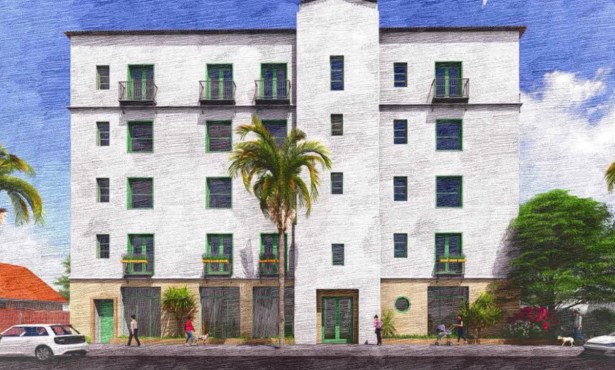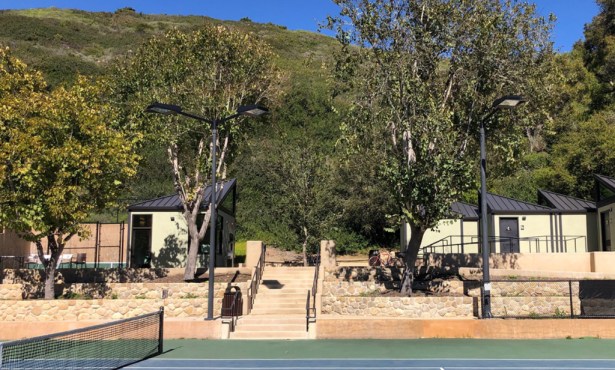Follow the Red Road
Mitch Robles
At Red Road Studios, ongoing.
Reviewed by Lorissa Rinehart
Walk around the corner of Mason and Helena in downtown Santa
Barbara and you’ll find an unexpected and unassuming red arrow
reading simply: “art.” Follow the arrow and you’ll find something
even more unexpected: Red Road Studios. Showcasing Native American
art from around the United States, Red Road is the only gallery of
its kind in Santa Barbara.
The gallery is small — only 20 by 15 feet — and overflowing with
art in media ranging from oil painting to abalone jewelry. For
those accustomed to airy and spacious galleries where even the
softest footstep echoes loudly off half-naked walls, it takes a
while to adjust, but it’s worth the effort. The space creates a
cozy, comfortable atmosphere allowing for an intimacy that befits
the work displayed.
“Native art” is a deceptively simple term that conjures images
of weaving and pottery, crafts that are, to be sure, a part of the
exhibition at Red Road. However, Mitch Robles, an artist of Chumash
decent who is prominently featured at the gallery, proves just how
complicated Native art can be. His painting “Heoka” depicts an
ancient Anasazi form in a way that is also sophisticatedly
abstract. Combining hot blues, oranges, yellows, and pinks, the
piece seems backlit by a raging bonfire. Robles’s brilliance shines
in quasi-impressionistic pieces such as “Sitting Bull,” “Ceremonial
War Shirt,” and especially “One Nation.” This last painting is
particularly successful in complicating and redefining common
themes within Native art. “One Nation” depicts in profile what
appears to be an archetypal Native American warrior, but the figure
is anything but cookie-cutter. With a palette of turquoise, deep
reds, muted browns, purple, and black, it is painted in a style
that could have been inspired by Matisse.
Other artists on display at Red Road include Rosemary Lopez, a
local Chumash woman and material culture artist, and Richard
Hansen, whose utilitarian porcelain bowls are beautiful enough to
be fine art. In addition, Aleqwel Mendoza, the director of Red Road
Studio, uses traditional Chumash tools to fashion exquisite abalone
jewelry.
When asked what his vision for the gallery was, Mendoza replied,
“I want to create a space that can be a site for trading with other
indigenous nations and a place where people can learn about and
just enjoy Native art.”


